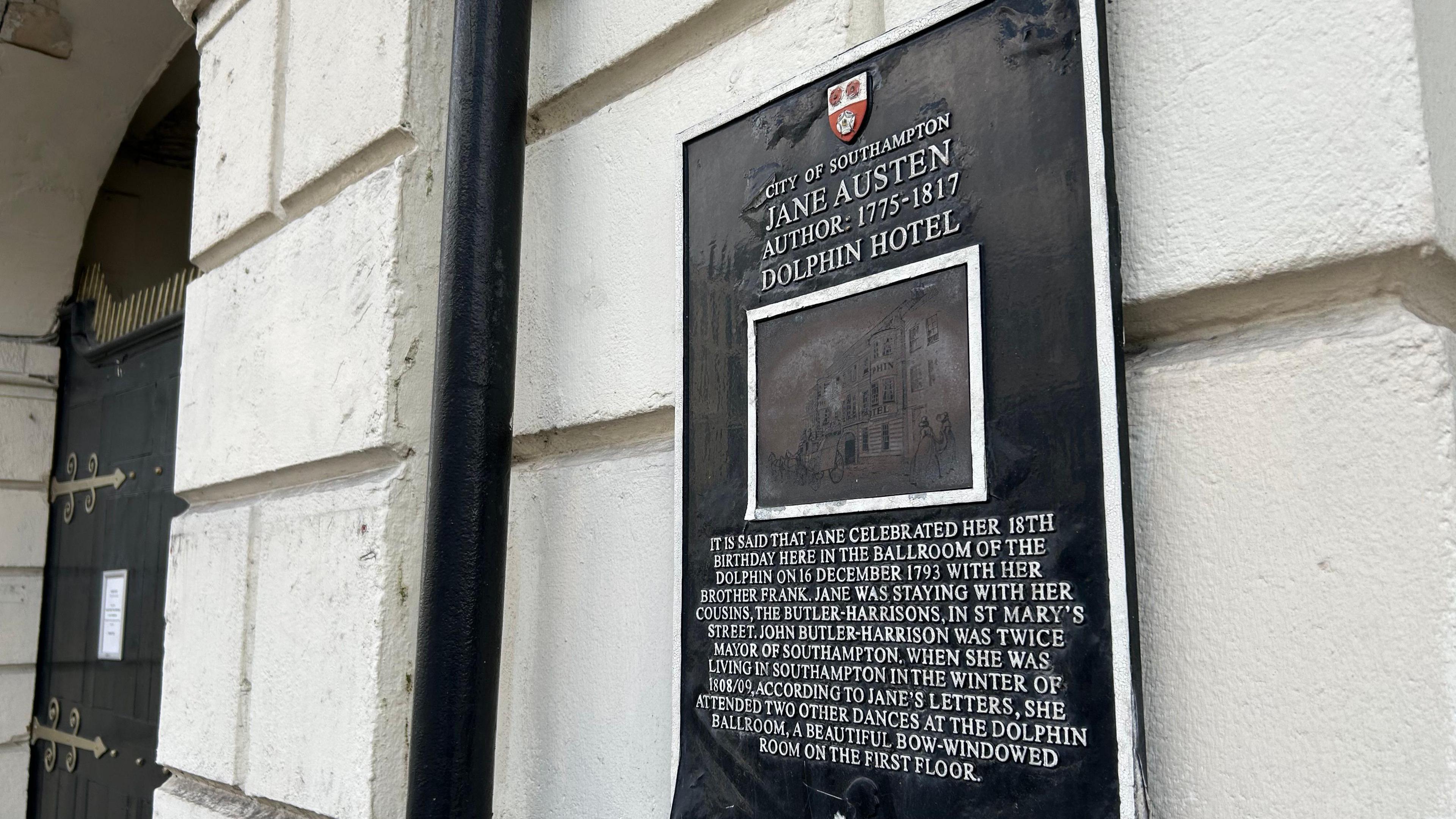Opposition to historic hotel student housing plan

The Dolphin Hotel, built more than 500 years ago, sits on the High Street in Southampton
- Published
Plans to convert a 500-year-old hotel into student accommodation have been met with opposition.
The Dolphin in Southampton has welcomed historical figures like Queen Victoria, Admiral Lord Nelson and Jane Austen.
Dolphin Hotel Property Ltd submitted an application to the city council to change the use of the grade II listed building.
The consultation period for the plans has now closed but local residents, councillors and historical societies have all expressed their opposition to the changes.

The Dolphin holds a plaque outside the building which references its links with Jane Austen
Bargate ward councillor Sarah Bogle said it could be detrimental to tourism and visitor numbers to the city.
She said: “This is an historic and public-facing building with a rich heritage from the 18th Century and Jane Austen associations."
The Hampshire branch of the Jane Austen Society said next year is the 250th anniversary of the novelist’s birth, with Southampton expected to be part of the celebrations.
The group said: “Whilst we are not enthusiastic about this proposed change of use, it does mean that the building will have a future which it currently does not.
"This is preferable to the building [being] allowed to become derelict.”
An objection was also submitted by the owner of an independent bookshop in the United States of America.
They said: “I request that you consider the cultural importance of the Dolphin Inn as the only remaining structure in Southampton with Jane Austen connections."
They added that they serve the “international community of Jane Austen fans and scholars”, many of whom plan to visit Jane Austen sites for the author's 250th birthday.
A letter submitted on behalf of the applicant by Savills said: “This change of use would ensure ongoing employment and can fund the necessary improvements to the building’s fabric ensuring the viable use of this important listed building in the long term.”
Follow BBC South on Facebook, external, X (Twitter), external, or Instagram, external. Send your story ideas to south.newsonline@bbc.co.uk, external or via WhatsApp on 0808 100 2240, external.
Related topics
- Published6 April 2024
